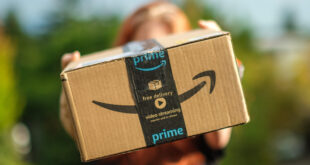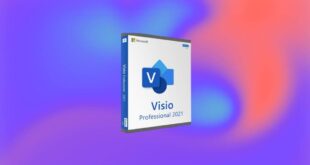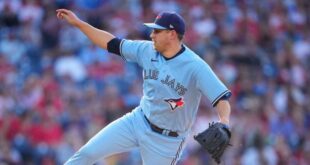I like to check my sleep tracker as soon as I wake up in the morning. I like to know how many hours I slept the night before and the quality of that sleep. There are days, though, when I check my data and scratch my head at the information presented. There are times when there are discrepancies between the data collected and what happened in reality.
Here’s an example: A sleep tracker once told me that I slept a reasonable 8 hours when I was wide awake at 4 a.m. — a time my sleep tracker told me I was asleep. This got me thinking about the accuracy of sleep trackers and whether a perfect device exists. I decided to chart my sleep data from three different trackers for a month in an attempt to find one that I believe is more accurate.
Please note that I’m not a data specialist or a scientist. While I have my own sleep data from these three sleep trackers to back up my opinions, I haven’t conducted enough research and I don’t have the right equipment to definitively state which sleep tracker is most accurate. What I do have is my own experience from countless nights of testing and a data-informed viewpoint on which sleep trackers are the most user-friendly, provide valid data and — most importantly — are worth the money. Here’s my experience.
Tracking my sleep for a month
I set out to see how sleep data from popular sleep trackers compare. I tracked my sleep for a month using an Oura Ring, a Garmin watch and an Eight Sleep mattress cover.
In an effort to keep my data as consistent as possible, I attempted to cut out any unnecessary variables. First, I used each sleep tracker consistently for an extended period before I started recording my data. I used the Eight Sleep Pod cover for about nine months, and I used my Garmin for about six. The Oura Ring wearable was new, but I gave it at least a month and a half to establish a personalized baseline before I started recording my sleep data.
I also wore the two wearables each day and each night of the month. When I had to charge my Garmin or Oura Ring, I charged during the day, so I had a full battery at night. After charging, I always returned the watch to my left wrist and the ring to my right pointer finger. While the mattress cover isn’t a daytime wearable, I used it for daytime naps, and for Eight Sleep specifically, I made sure to spend each tracked night sleeping in my bed and not on the couch — despite being tempted during late nights in front of the TV.
Sleep tracker 1: Oura Ring Gen 3
The Oura Ring is a trendy, stylish wearable that tracks sleep, stress, activity, heart rate, your cycle and more. The design is sleek and I often forget I am even wearing it. The ring is meant to be placed on your pointer finger, with the three sensor bumps at the base of your finger, facing you.
I tested the Gen 3 version in the Horizon style. It comes in six different finishes, and pricing starts at $349 (however, special prices bring it down to $299 right now). The membership subscription is $6 a month.
Sleep tracker 2: Garmin Forerunner 165
Garmin is a well-known brand in the running community. The newer Garmin watches also track sleep, including most of its Forerunner series. Before my Forerunner 165, which I used to track my sleep for this article, I had a Forerunner 45S that tracked both my sleep and workouts. This wrist-based tracker is my preferred device for tracking my runs.
The Forerunner 165 without an added music feature is $250. Garmin doesn’t require a monthly subscription.
Sleep tracker 3: Eight Sleep Pod 3 Cover
As a hot sleeper, I’m a huge fan of Eight Sleep. This unique mattress cover is connected to a tank of water beside the bed and actively cools you while you sleep. In addition to automatically adjusting your temperature to mimic your sleep cycle through the night, it also tracks your sleep, heart rate, heart rate variability, breath rate and snoring.
This sleep tracker is placed right over your mattress, similar to a fitted sheet. I used the Pod 3 for this sleep tracker comparison, but there is also the Pod 4 and Pod 4 Ultra. Pricing starts at $2,295, and the monthly subscription is $25.
My total hours spent asleep
While each tracker has its own unique algorithm to determine the total hours slept, the science behind sleep is the same. Heart rate fluctuates throughout the night as the body goes through the stages of sleep (light, deep and REM). Sleep trackers detect both heart rate and movement to determine when you are asleep and in what stage. However, keep in mind that sleep-tracking technology has limitations, and even with extensive usage, these devices are not perfectly accurate.
My chart below graphs the total number of hours I slept each night for 31 nights straight. The green line represents data from Oura, the purple is from Garmin and the red is from Eight Sleep. Nights 11 and 22 are outliers in this data, as I slept far more than usual on one night and far less than the other. I didn’t include these two nights in my final conclusions on my sleep data.
At first glance, it was quite disappointing to see the different results among the three trackers. While I didn’t expect the trackers to give all the same data, I was hoping that two would be at least similar. However, taking a closer look, there seems to be less of a gap difference between the hours recorded from Garmin and Oura. On 22 of the nights, Garmin and Oura are the closest in total recorded hours of sleep. Eight Sleep seems to give higher data than Garmin and Oura. In fact, it recorded the highest amount of sleep for 23 nights of the month.
Eight Sleep often told me that I slept anywhere between 8.5 to 10.5 hours each night. While I am guilty of sleeping in on some days, I do have to note that in the month I recorded my data, I was up early most of the mornings. I was training for a half marathon and needed to do my runs in the early, cool hours. It was a change to my usual routine, so I know for a fact that my sleep data should have looked more like the hours recorded by Oura and Garmin.
My total hours of deep sleep
Deep sleep is not the same as REM sleep. During REM, the brain processes information, stores memories and is most likely to dream. Deep sleep is when the body restores itself physically. Since the three sleep trackers are also fitness trackers and measure how prepared and recovered you are for the day’s workout, deep sleep is generally deemed more important.
Annie Miller, licensed psychotherapist and sleep expert, told me, “Users should be cautious about expecting precise sleep stage data. Research shows that while wearables can be fairly accurate for total sleep duration, they are less reliable for specific sleep stages (like deep and REM sleep). Prolonged periods lying in bed, even while awake, can be mistakenly interpreted as sleep with trackers.”
You typically need to spend about 15- to 20% of your total hours of sleep in the deep sleep stage. The month I recorded this data, I got about 8.5 to 9 hours of sleep each night. That means that my ideal deep sleep range would be anywhere from 1.3 to 1.8 hours. A little less than half of my nights’ data from all three sleep trackers was below this ideal deep sleep range. Twelve readings were above this range, and 11 of these were from Eight Sleep. However, Miller reminded me that stressing over sleep data can worsen sleep quality “through a self-reinforcing cycle of anxiety and sleep disruption.”
On 14 out of the 31 nights, almost half of the month, the deep sleep recorded from my Garmin fell right in the middle between my Oura Ring and my Eight Sleep data. Again, Eight Sleep recorded high numbers. On 19 nights of the month, Eight Sleep recorded the most amount of deep sleep compared to lower readings from Oura and Garmin. On 16 nights out of the month, my Oura Ring recorded the lowest amount of deep sleep compared to the other two sleep trackers. Garmin seems to land significantly in the middle between the extreme highs of Eight Sleep and the low readings of Oura.
Tracking other vitals
These three devices tracked total hours of sleep and time spent in deep sleep, as well as other vitals and factors that affected my sleep quality.
Daytime naps
I’m a huge fan of a quick, 15 to 20-minute daytime nap, and luckily, all three trackers were able to record these extra minutes of sleep. My Garmin has a new feature called Nap Detection that automatically records and detects naps. I found that it was fairly accurate at recording when I fell asleep and when I woke up. My Oura Ring also automatically recorded my naps, but a nap had to be longer than 15 minutes for the Oura to detect it. Eight Sleep, of course, only recorded my naps when I took them in my bed. There were two times I napped on the couch that my wearables counted but Eight Sleep didn’t. Since all trackers record naps slightly differently, this could account for the difference in data.
Activity and workouts
Since Oura and Garmin are also fitness wearable devices, they recorded my runs and workouts. To record a run, I had to start and stop my Garmin manually. Oura, however, has automatic workout detection. It was fairly accurate at recording when I was working out and active, but there were times it guessed that I was walking when I was running. I had to change the activity that it selected often. On the other hand, Garmin’s GPS is unmatched. When I had a workout day, my Garmin would suggest that I take time to wind down before bed with light yoga or meditation.
Average HRV
My average HRV according to Eight Sleep
HRV, or heart rate variability, is a metric that records the milliseconds between each heartbeat. Variation is normal, and as the body goes through the sleep stages, HRV fluctuates more. These readings measure how well your body responds to stress and can even give insight into your sleep quality. Miller said, “While tracking HRV can be insightful, avoid using it as the sole indicator of health or stress. HRV values naturally fluctuate, and focusing too much on HRV may lead to unnecessary stress.”
My heart rate variability 31-day averages from each tracker are as follows:
- Oura: 31 ms
- Garmin: 34 ms
- Eight Sleep: 38 ms
My HRV ratings are lower than I would like them to be. While I’m fairly active, run multiple times a week and try to get enough sleep, I believe that my score is lower because of my anxiety and mental health; studies have found that lower HRV has been associated with anxiety disorders. I can’t accurately state which tracker I believe is more precise when it comes to HRV, but the scores seem to follow the trends I saw in my data above. Eight Sleep is extra high, Oura is low and Garmin is in the middle.
My conclusions
I was disappointed that my sleep trackers weren’t more consistent with one another. Again, I’m not claiming that some of these devices work improperly. Each has its own algorithm for determining when my body is awake and active or when I am asleep. Wrist-based trackers, like Garmin, interpret body movement and motion differently than a ring tracker, and how tight the device is on the wrist or finger can skew readings. Sleep trackers on a mattress can only detect you when you sleep on the bed, and if you sleep with pets, it might also throw your data.
That being said, based on my own opinions of my own data, I think the recorded hours from Eight Sleep were exaggerated. I suspect that the pod cover detected that I was in bed and asleep when I was actually awake. It takes me quite a while to get out of bed in the morning, and I sometimes like to scroll on my phone in bed before I fall asleep. If my heartbeat was low enough, it might have detected that I was sleeping. My dogs also like to sleep in bed with me for a few hours in the morning. There’s a chance the cover could have also detected their heartbeats long after I had gotten up.
Eight Sleep is the most expensive sleep tracker that I tested, and if you are solely looking for a non-wearable sleep tracker, I don’t think it is worth the price. However, the Eight Sleep Pod Cover is first and foremost a tool for hot sleepers. I honestly can’t sleep without it. If you struggle with night sweats, then it may be worth it for you.
My Garmin Forerunner gave me middle-of-the-road readings, and for this reason, I think it tracked my sleep the best. I also agreed with most of the data that it gave me each morning. I didn’t feel like I slept as long as Eight Sleep told me, but I didn’t think I slept as little as my Oura data. Garmin is also my chosen fitness tracker for running and overall fitness.
That being said, while it gave me lower readings, Oura is my favorite sleep tracker. It’s so simple and small. I already wear rings during the day, so it already fits into my everyday routine. I also forget that I’m wearing it. Garmin watches can be bulky, and I have woken up with an imprint of the watch band on my face before. I also love that it automatically records my activity and gives insight into my cycle that other trackers can’t.
Considering a sleep tracker or a new sleep accessory? Here’s who I think would like each tracker best.
The Oura Ring is best for:
- Those who want to track their sleep, cycle and minutes of activity
- Sleepers who dislike bulky or distracting trackers
- Those who want a sleek design and a tracker that fits into their wardrobe
The Garmin Forerunner 165 is best for:
- Runners and sleepers who don’t want to pay a monthly subscription fee
- Those who want the best of a fitness tracker and a sleep tracker
- Sleepers on an average budget
The Eight Sleep Pod 3 Cover is best for:
- Hot sleepers who need temperature regulation throughout the night
- People who despise wearables
- Sleepers who have a large budget
For readers interested in sleep tracking, Miller said, “It’s important to remember that sleep trackers are estimations, not diagnostics. Over-reliance on sleep data or attempting to control sleep metrics can lead to sleep anxiety, sometimes worsening insomnia. It is known as ‘orthosomnia,’ and it refers to insomnia or poor sleep quality driven by an obsession with sleep metrics. If readers find themselves experiencing increased anxiety or frustration over their sleep data, it may be beneficial to take a step back from tracking.”
In the coming months, I’m testing more sleep trackers, such as the Withings Sleep Tracking Mat, the Withings ScanWatch2 and the Samsung Galaxy Ring. I hope to record more nights of sleep to analyze.
 synnbiob
synnbiob


